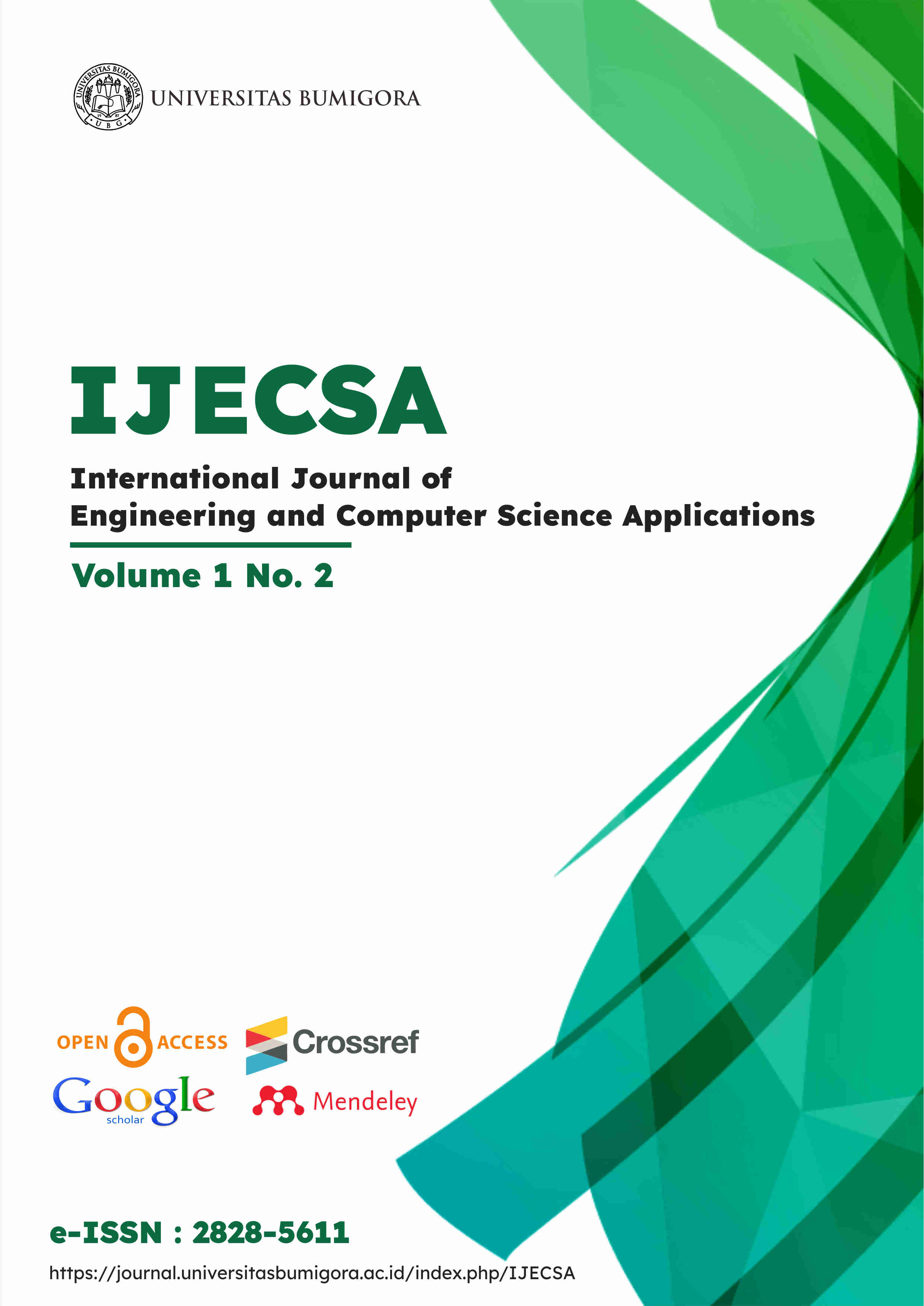Designing a Honey Quality Tool Based on Gas Sensor and Color Sensor
Abstract
Honey has many benefits. Thus, honey counterfeiting often occurs with the ever-increasing demand. However, many do not know how to distinguish between real and fake honey, even honey breeders and hunters find it difficult to tell the difference. The honey used to test the quality of honey is honey produced by Apis dorsata bees or wild bees, the nectar consumed by these bees is the kesambi tree, the kesambi tree that grows a lot on the slopes of Mount Tambora, Bima district. Honey contains a lot of antioxidants such as vitamin C, pinocembrin, chrysin, pinobaksin, catalase, and many other ingredients that are very beneficial for the health of the body. Testing the authenticity of honey using two sensors, namely a gas sensor and a color sensor, the tool has been connected to a database and web application to display test data. The web application can be accessed from any location as long as it is connected to the internet network. The results of the research are the ideal distance for measurements is carried out as far as 2 cm. The success rate in testing pure honey with a mixture of honey has different values, such as the value of pure honey has a gas sensor voltage of 3.3 volts while the value of mixed honey with 50% pure honey and 50% sugar, the value of the gas sensor voltage is 2.54 volts. Mixed honey has a voltage below 3 volts. The results of the color sensor test, namely the sensor output have different values, the RGB value for pure honey is red 206, green 246, and blue 182 while the RGB value for mixed honey is for 20% pure honey and 80% sugar mixture produces an RGB value of Red 156, Green 210, Blue 171. The color sensor can distinguish between real honey and mixed honey for trigona honey.
References
[2] N. Gustina, K. Yuliati, and S. Lestari, “Madu Sebagai Wet Batter Pada Produk Udang Breaded,” FishtecH - Jurnal Teknologi Hasil Perikanan, vol. 4, no. 1, pp. 37–45, 2015.
[3] P. Jose Vazhacharickal, “A review on health benefits and biological action of honey, propolis and royal jelly,” Journal of Medicinal Plants Studies, vol. 9, no. 5, pp. 1–13, 2021, [Online]. Available: www.plantsjournal.com.
[4] S. Terzo, F. Mulè, and A. Amato, “Honey and obesity-related dysfunctions: a summary on health benefits,” Journal of Nutritional Biochemistry, vol. 82. 2020, doi: 10.1016/j.jnutbio.2020.108401.
[5] T. C. Pimentel et al., “Stingless bee honey: An overview of health benefits and main market challenges,” Journal of Food Biochemistry, vol. 46, no. 3, pp. 1–21, 2022, doi: 10.1111/jfbc.13883.
[6] E. Lika, M. Kostić, S. Vještica, I. Milojević, and N. Puvača, “Honeybee and plant products as natural antimicrobials in enhancement of poultry health and production,” Sustainability (Switzerland), vol. 13, no. 15, pp. 1–20, 2021, doi: 10.3390/su13158467.
[7] G. Ilia, V. Simulescu, P. Merghes, and N. Varan, “The health benefits of honey as an energy source with antioxidant, antibacterial and antiseptic effects,” Science and Sports, vol. 36, no. 4, pp. 272.e1-272.e10, 2021, doi: 10.1016/j.scispo.2020.10.005.
[8] D. D. Wulandari, “Analisa Kualitas Madu (Keasaman, Kadar Air,” Jurnal Kimia Riset, vol. 2, no. 1, p. 16, 2017.
[9] B. A. Wibowo, M. Rivai, and Tasripan, “Alat Uji Kualitas Madu Menggunakan Polarimeter dan Sensor Warna,” Jurnal Teknik ITS, vol. 5, no. 1, pp. 28–33, 2016, doi: 10.12962/j23373539.v5i1.15251.
[10] P. Seminar and N. Aplikasi, “Spektrofotometer Dan Machine Learning Berbasis Single Board Computer,” Prosiding Seminar Nasional Aplikasi Sains & Teknologi (SNAST), no. September, pp. 207–213, 2018.
[11] A. T. John, K. Murugappan, D. R. Nisbet, and A. Tricoli, “An outlook of recent advances in chemiresistive sensor-based electronic nose systems for food quality and environmental monitoring,” Sensors, vol. 21, no. 7, 2021, doi: 10.3390/s21072271.
[12] A. Szczurek, M. Maciejewska, B. Bąk, J. Wilk, J. Wilde, and M. Siuda, “Gas sensor array and classifiers as a means of varroosis detection,” Sensors (Switzerland), vol. 20, no. 1, pp. 1–17, 2020, doi: 10.3390/s20010117.
[13] I. E. Elemure, J. O. Akinyoola, A. M. Olawumi, A. E. Amoran, E. A. Oshin, and T. V Adebanwo, “Smart sorting method of grains using a colour sensor,” International Journal of Scientific Research & Engineering Trends, vol. 5, no. 3, pp. 2395–566, 2019.
[14] T. H. Budianto, “Analisa madu pada koloni lebah trigona berbasis arduino,” Prosiding Seminar Penelitian dan Pengabdian Pada Masyarakat, vol. 3, no. 1, pp. 114–117, 2020.
[15] I. N. S. A. Utama, S. Hadi, and I. P. Hariyadi, “Plume Detection System Based Internet of Things,” International Journal of Engineering and Computer Science Applications (IJECSA), vol. 1, no. 1, pp. 19–26, 2022, doi: 10.30812/ijecsa.v1i1.1698.












